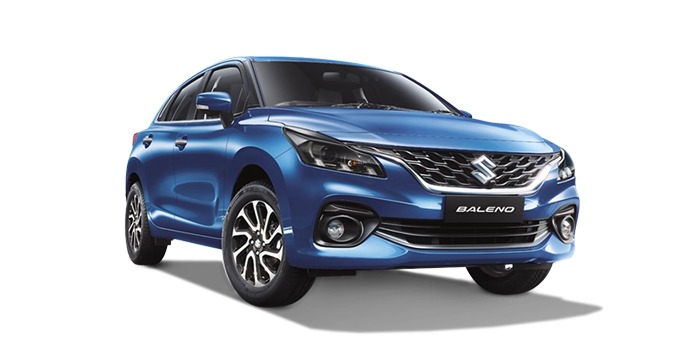When buying a new smartphone, one of the most important things to consider is the display quality. A phone’s screen isn’t just about how big it is — it’s also about how clear and sharp the visuals appear. The clarity of a display depends on its smartphone screen resolution, which is measured in pixels. More pixels mean more detail, making videos, games, and photos look stunning.
In today’s mobile market, you’ll often see terms like HD+, FHD+, QHD+, and even 4K. While these sound technical, understanding them can help you make a better buying decision. In this guide, we’ll break down these screen resolutions, explain their differences, and help you decide which one is right for you.
What is Screen Resolution?
Screen resolution refers to the number of pixels displayed on the screen, measured by width × height. For instance, a resolution of 1920 × 1080 means there are 1,920 pixels horizontally and 1,080 pixels vertically.
The higher the resolution, the sharper and more detailed the content will look. However, a higher resolution also demands more battery power and processing performance. This is why mobile display quality is always a balance between sharpness and battery efficiency.
HD+ (High Definition Plus)
Resolution Range: Around 720 × 1600 pixels
Pixel Density: Typically 250-300 PPI (pixels per inch)
HD+ is commonly found in budget and entry-level smartphones. It offers decent clarity for basic tasks like calling, messaging, and casual video streaming. If you mostly use your phone for social media, light gaming, and occasional movies, an HD+ display is more than enough.
Pros:
- Affordable devices
- Decent for basic usage
- Less power consumption
Cons:
- Not very sharp on larger screens
- Text and icons may look slightly pixelated
FHD+ (Full High Definition Plus)
Resolution Range: 1080 × 2400 pixels
Pixel Density: Around 400-450 PPI
FHD+ is the most common resolution in mid-range and upper mid-range smartphones. It strikes a great balance between sharp visuals and battery efficiency. Most streaming apps like Netflix, YouTube, and Prime Video support full HD playback, making it perfect for everyday entertainment.
Pros:
- Crisp and clear visuals
- Ideal for gaming and HD streaming
- Good balance of performance and battery life
Cons:
- Slightly more expensive than HD+
- Consumes more power than HD+
QHD+ (Quad High Definition Plus)
Resolution Range: 1440 × 3200 pixels
Pixel Density: 500+ PPI
QHD+ displays are usually reserved for premium flagship smartphones. With this resolution, you’ll experience stunning detail, perfect for high-end gaming, 4K video playback, and virtual reality (VR).
If you are a tech enthusiast who loves the best possible mobile display quality, QHD+ is an excellent choice. However, it consumes a lot of battery, and many manufacturers now allow users to switch between FHD+ and QHD+ to save power.
Pros:
- Ultra-sharp visuals
- Great for VR and pro-level gaming
- Best for content creators and media enthusiasts
Cons:
- Higher battery consumption
- More expensive smartphones
4K Display
Resolution Range: 2160 × 3840 pixels
Pixel Density: 600+ PPI
4K screens are rare in smartphones and are mostly found in select flagship models like some Sony Xperia phones. While the visuals are breathtaking, the difference between QHD+ and 4K on a small phone screen is barely noticeable to the human eye.
4K displays are best suited for niche users, such as mobile filmmakers or photographers who need the absolute highest resolution possible.
Pros:
- Exceptional clarity
- Great for professional video editing
- Future-ready technology
Cons:
- Drains battery very quickly
- Limited availability and high cost
Which Resolution Should You Choose?
| Resolution | Best For | Battery Usage | Cost Range |
| HD+ | Budget users, casual tasks | Very low | Low |
| FHD+ | Everyday use, streaming, gaming | Moderate | Mid-range |
| QHD+ | Premium gaming, VR, content creation | High | Expensive |
| 4K | Professionals, future-proof needs | Very high | Premium only |
If you’re on a budget, HD+ is sufficient. For most users, FHD+ offers the perfect mix of sharp visuals and efficiency. If you’re a gamer or content creator, QHD+ is ideal. 4K is mainly for enthusiasts and professionals who need absolute perfection.
Importance of Choosing the Right Display
Your phone display impacts everything from gaming and streaming to battery life and performance. Choosing a phone with the right resolution ensures that you don’t overspend on unnecessary features or compromise on quality.
Many people often get distracted by terms like “Super AMOLED,” “LTPO,” or “HDR10+,” but these are display technologies separate from resolution. Ideally, you should focus on both — resolution for clarity and technology for color accuracy and brightness.
Interestingly, just like how people search for movies on platforms like tamilrockers, users also look for ways to get high-end smartphone features without spending a lot. However, when it comes to phones, it’s always better to invest in a genuine product to ensure long-term performance and safety.
Final Thoughts
Understanding smartphone screen resolution is essential before buying a new device. Whether you go for HD+, FHD+, QHD+, or 4K depends on your budget, usage, and preferences. For most users, FHD+ is more than enough to enjoy videos, games, and apps without straining your wallet or battery.
In the end, choosing the right display is like choosing the right movie streaming source — just as you should avoid pirated sites like tamilrockers for quality and safety reasons, you should avoid low-quality displays that compromise your smartphone experience.
By making an informed decision, you can ensure your new smartphone delivers the best mobile display quality for years to come.


